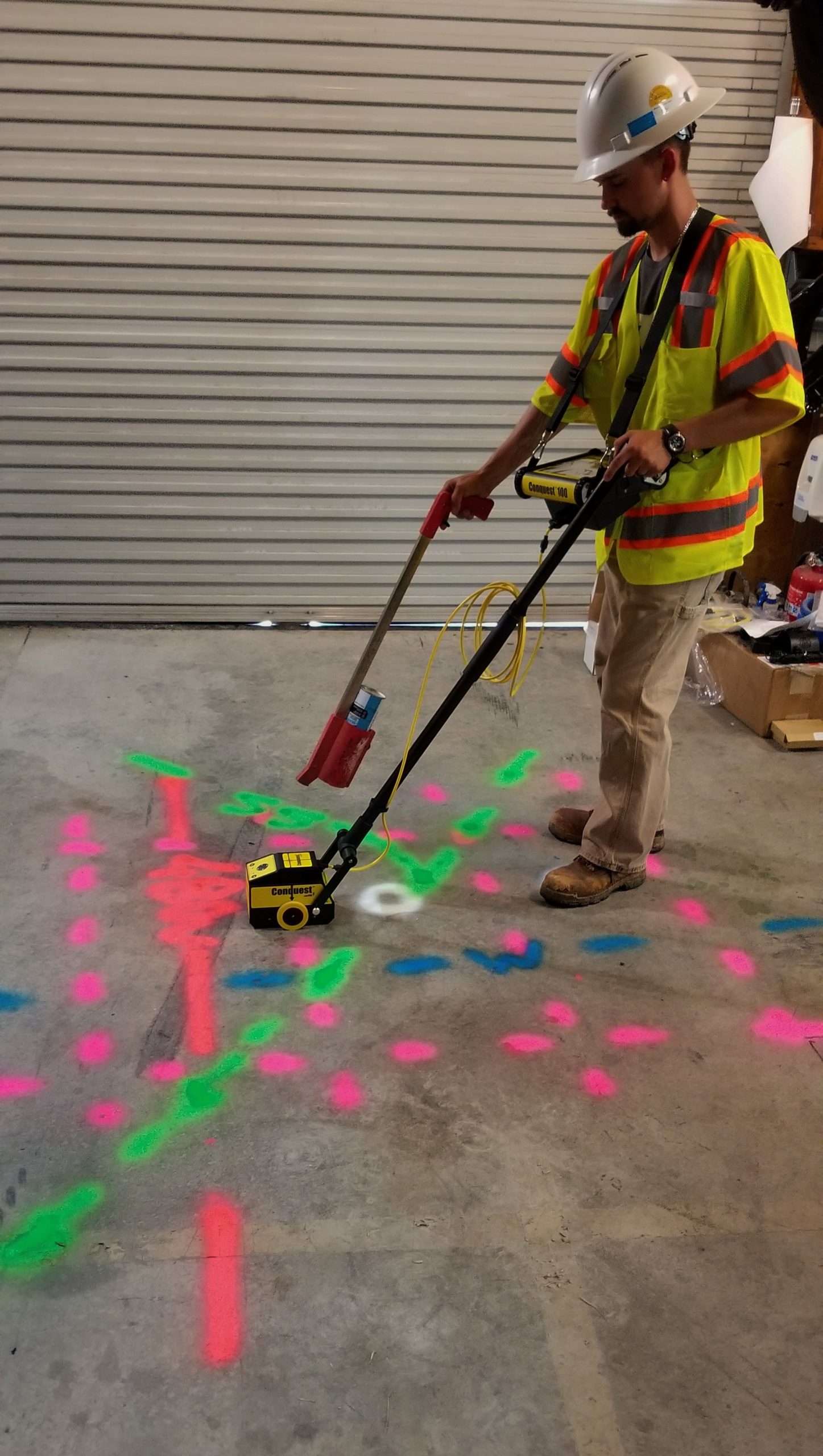Enhancing Task Planning and Execution Through Advanced Concrete Scanning Methods
In the world of job planning and accuracy, foresight and execution are important aspects that can make the difference between success and setbacks. Advanced concrete scanning methods have become a sophisticated device set to boost the standards of task administration within the construction industry. By taking advantage of cutting-edge technology, these strategies use a look into the structural integrity of a structure also before the initial brick is laid. The effects of such developments are profound, guaranteeing a standard shift in how tasks are approached and delivered.
Advantages of Advanced Concrete Scanning Methods

Improved Accuracy in Job Evaluations
Enhancing job evaluations with innovative concrete scanning techniques substantially enhances the accuracy and reliability of building and construction examinations. By using advanced scanning innovations such as ground-penetrating radar (GPR) and 3D imaging, project groups can now obtain detailed understandings into the problem of concrete frameworks, identifying possible flaws or weaknesses that might not show up to the nude eye. This boosted level of accuracy in job analyses allows construction professionals to make even more enlightened decisions regarding repair work and maintenance techniques, leading to boosted general project end results.
In addition, the increased precision in task evaluations attained through advanced concrete scanning methods aids in lessening the risk of unforeseen problems during the building and construction stage. By proactively discovering covert anomalies within concrete frameworks, such as rebar rust or voids, task groups can deal with these problems beforehand, staying clear of costly delays and rework later on in the project lifecycle. Ultimately, the improved precision in project evaluations assisted in by sophisticated concrete scanning strategies adds to greater effectiveness, cost-effectiveness, and high quality in construction jobs.
Very Early Recognition of Architectural Challenges
Very early discovery of structural challenges plays an essential duty in ensuring the stability and safety and security of concrete structures throughout the building and construction process. Determining potential issues at an onset enables timely treatment, preventing expensive rework, timetable hold-ups, and safety risks. Advanced concrete scanning methods, such as ground-penetrating radar (GPR) and 3D imaging, make it possible for project groups to reveal surprise defects, spaces, reinforcement design discrepancies, and other anomalies that might endanger the framework's security.
By applying these techniques during the planning and implementation stages, building and construction professionals can proactively deal with architectural challenges prior to they rise into significant issues. For instance, finding poor concrete cover over support bars early on can avoid corrosion and structural weakening over time - RainierGPR Service Areas. Furthermore, determining variations in concrete density or thickness can help maximize product use and ensure consistent strength homes across the framework

Inevitably, early recognition of architectural difficulties through advanced concrete scanning not only enhances read this article the general top quality and longevity of the building and construction yet likewise contributes to a safer developed atmosphere for residents and users.
Enhanced Precaution in Building
The application of robust safety and security procedures is vital in the construction sector to reduce risks and guard the wellness of employees and stakeholders. Construction sites are naturally dangerous atmospheres, with possible risks varying from falls and tools malfunctions to architectural failings. To improve safety procedures, construction business are increasingly embracing technical developments such as wearable devices that keep an eye on employees' important indicators and spot possible health concerns in real-time. Furthermore, making use of drones for site security allows for regular security examinations without placing employees in harm's method. Security training programs have actually also developed to consist of virtual truth simulations that give hands-on experience in dealing with emergency circumstances. Additionally, the integration of man-made knowledge in safety and security management systems enables positive identification of possible risks, permitting prompt treatments. By focusing on safety and security via the unification of sophisticated modern technologies and thorough training programs, construction projects can considerably decrease accidents and produce a safe workplace for all entailed - RainierGPR Service Areas.
Streamlining Project Monitoring Processes
To maximize functional efficiency and make certain job success in the construction market, a concentrate on enhancing task monitoring procedures is necessary. By executing effective project monitoring procedures, building tasks can lessen hold-ups, decrease prices, and enhance total efficiency. One key facet of streamlining job management is the usage of innovative technologies such as Building Information Modeling (BIM) software click reference application, which allows real-time partnership, clash detection, and precise project organizing. Additionally, the fostering of cloud-based task management platforms enables smooth communication amongst staff like it member, instantaneous access to job information, and the ability to track development in real-time.

Final Thought
In conclusion, the use of innovative concrete scanning strategies offers numerous benefits for project planning and execution. These techniques offer enhanced precision in job analyses, very early identification of architectural challenges, enhanced precaution in building, and structured task monitoring processes. Integrating these techniques into project workflows can ultimately lead to a lot more effective and successful outcomes in construction projects.
Inevitably, the boosted precision in project assessments facilitated by innovative concrete scanning strategies contributes to better performance, cost-effectiveness, and top quality in building projects. RainierGPR Service Areas.
To optimize functional effectiveness and ensure task success in the building industry, an emphasis on improving project monitoring processes is important. By implementing effective project monitoring processes, construction projects can minimize hold-ups, decrease prices, and enhance total efficiency. By streamlining project monitoring processes via innovation integration, clear communication, and data-driven strategies, building tasks can attain better performance, cost-effectiveness, and successful results.
These strategies offer better accuracy in job evaluations, early recognition of architectural challenges, improved safety steps in building and construction, and streamlined project administration procedures.